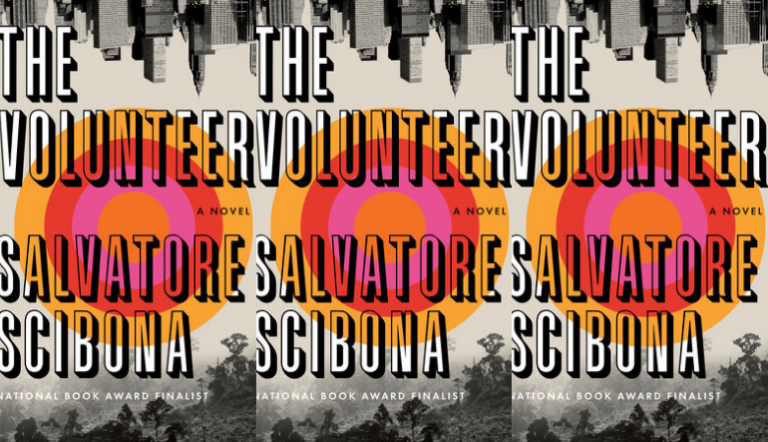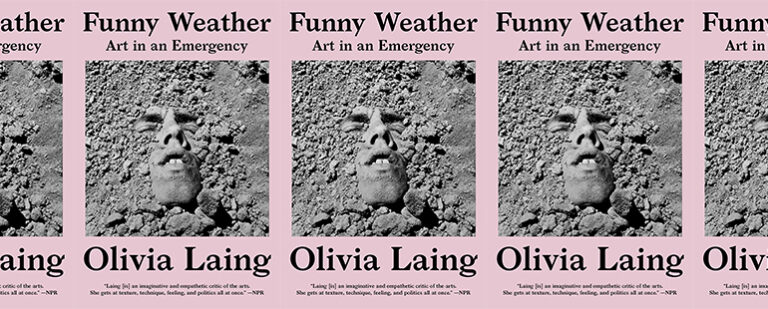The Historical Imperatives of Swing At Your Own Risk

Metta Sáma’s second full-length book of poetry, Swing At Your Own Risk, is one of those rare collections that synthesizes many current techniques of the experimental poem while also reinventing them. The collection’s sheer formal variety attests to this: of its forty-one poems, we find long pieces whose forms shift internally; a short sequence of prose poems; the spare, page-spreading lyric fragment; the brief, single-digit beat line; lists that count forward and a list that counts down; a chant; historical poems; a persona poem; the haibun; and spiritual channeling and communion. Deeply rooted in Black feminist discourse, Swing At Your Own Risk is also in dialogue with an equally stylistically diverse set of poets, from Sun Yung Shin and Bhanu Kapil—whose repeated, alternating epigraphs structure the first four of six sections—to Tyehimba Jess, M. NourbeSe Philip, Cornelius Eady, and Jay Wright, among others.
These poems are piercing, analytical, unforgiving, and beautiful; Sáma’s consideration also thrums with the affective damages that life under the U.S. regime repeats, and denies. Its kinetic lyric mode, from acts of witnessing to meditation, is a powerful interrogative tool into the structures of power it laments, despises, and outwits. Her work, especially in its chronicling of white cruelty’s long history and the scale of extreme violence against Black people, from the Middle Passage to contemporary police killings, also draws from the archive, from the historical record of the U.S. Colonial era into the present day. So too does this collection contain Sáma’s meditations on belonging to her home space of the U.S. South, feminist Biblical exegesis, film and literary criticism, and some of the most lapidary erotic poems perhaps I have ever read. Both a scholar and a multi-genre creative writer, Sáma’s collection is a definitive part of a line of historical poetics—part documentary, part interpretative—that refuses to distinguish between the horrors of the past and their ongoing inflections in the present.
Swing At Your Own Risk is situated at the crux of what is at stake in this contemporary American political moment, as the white supremacist murder of Black people has, damningly, persisted as long as the U.S. has existed. Equally as relevant is the stunted thinking that racism, misogyny, and other nearby bigotries produce, which Sáma also attends to adroitly, especially in the exhaustive litany of her closing poem, “#WhyWeCantHaveNiceThings,” comprised of eighty-six common, hateful logical fallacies, excuses, dismissals, cultural refrains, and other epithets that perhaps occur among the dregs of your most uncurated social media feed—“Get over it already!”, “She was asking for it,” “Stop talking about it & maybe it’ll go away,” and much worse. Hinging on the poem’s rhetoric is an appeal for actual discourse, online and elsewhere, and the actual communication beyond, among other limitations, “the playdough that is / the white imagination” that true social progress will require.
For the collection’s ambition is to use experimentation as a means to true invention and particulate attention; to summon the lyric mode and all its possibilities as a means to connect experience’s detail to the expanse of historical period. Nowhere is this more evident than the book’s provocative title; as much as it contains its grim connotation so too is there a kind of epistemological shaping at work. As Katherine McKittrick determines in the opening of the essential text Demonic Ground: Black Women and the Cartographies of Struggle that “[i]f space and place appear to be safely secure and unwavering, then what space and place make possible, outside and beyond tangible stabilities, and from the perspective of struggle, can potentially fade away.” Space and place shift in accordance with feeling, history, and experience. I take “unwavering,” here, and its suggestion of alternation (from its absence to its presence), to be connected to the resonant meanings in Sáma’s use of “swing.” Swing At Your Own Risk is composed of six sections—an even number of back and forth—each titled “Swing.” To swing—to course, or undulate, between two points in space—helps us think about the repetition of its use as section titles. It also connects the past to the present. It is a word with deep etymological history, too: some of its early usages in the Oxford English Dictionary, as a verb, include “to be silent,” “to labour; toil,” “a stroke with a weapon,” or “to draw out a sword” (see: the blade held in the figure’s hand in the cover photograph by South Carolina artist Michaela Pilar Brown, titled Cut You). And I was taken aback to find this image within the primary definition: “to move freely backwards and forwards, as a body suspended from a support above; to oscillate below a point of support, as a pendulum or the like”—a description so haunted by violence to the human body, and eerily neutrally put. There is also a sonic connection: “of a bell: to send forth [sic] a peal of sound—” here too, we might hear “Swing Low, Sweet Chariot,” which Sáma later references: “swing / low / swing”. Finally, “Swing” also offers its meaning in dance, that particular levity. As the poems variously float their fragments, visually prise apart their form, pause in the page’s space, reground in prose, shift from past to lyric present, Sáma reminds us that to swing is a visual, gestural, intellectual, sonic and temporal, perpetually kinetic, movement. It seems to be, perhaps most importantly, Sáma’s figure for the intense emotional work of swinging close to her subjects, a way to name the work of thought and feeling between word, sentence, stanza, and through Swing At Your Own Risk’s variety of forms.
Yet none of these semantic signals can, or could, prepare the reader for the nature of the historical episodes that Sáma presents, though she gives us as fair a warning as possible. Nothing ever can. Her documentary work, especially in attending to lynchings that occurred in Tennessee and Georgia, adds to, details, and lyrically holds space for further acknowledgment and presence in this regional, poetic archive of place (different parts of Sáma’s hometown, Chattanooga, fall on the border between the two states). “Historical Imperative,” for example, is a long poem that links together memory-work, assault of the speaker’s body, the present moment of the speaker’s return to their hometown, the encounter with historical event, the names of the victims from the 1946 Moore’s Ford lynching in Georgia (no justice was ever served) among unnamed Black others—we’re coursing quickly through time and space in this poem—and arrives in the “Present,” which is constructed in ekphrasis of a brutal image of a lynching sold as a postcard (as was common practice), its horror amplifying as the speaker notes more and more detail: “White man pointing at hanging body / peace // Smiling white man pointing at hanging body / peace // Smiling white man & smiling white boy child pointing at hanging body / peace.” This net of notice extends into the scene itself: “White woman laughter is not the face for this scene / peace regardless // White cameraman to sleep is to sleep flashes of light striking limp bodies / more peace.” The poem becomes a doubled encounter with the scene of violence, blending ekphrasis and interpretive vision, end-stopped by “peace’s” devastating irony. Such an encounter within the material and immaterial historical record, here and throughout Swing At Your Own Risk, engages the best of what this lyric, historiographical mode has to offer. Sáma points to the recuperative potential within the work called for by this “historical imperative”, as the poem concludes: “To record is to remember to remember is an action.”
As much a call to action as a statement of poetics, “[t]o record is to remember to remember is an action” is an example of the transitive property, a kind of repetition generating new meaning. Like analogy, this form of rhetoric hinges, in a sense, on a point between two words. We might be able to read such phrases as syntactic, and logical, linguistic examples of a swing. Sáma borrows the double colon from the Aristotelian formatting of analogy, or what is formally described in colon notation as “a ratio which means equality,” and uses this form of punctuation to designate spatiotemporal relations alongside regular logical work. When asked about punctuation in a 2013 interview with Anna Lena Phillips Bell, Sáma responded:
I love punctuation and play with it so often, and love to make it do work that it’s never done before, inviting the reader, then, to be actively involved in reading. Making reading a real experience. And this, too, is a real experience. As you & I worked out the kinks of this poem, I had to stop and re-read a line or a word, trace my way back, question myself, you know, thinking, ummmm, chica, really, do you want your readers all tongue-jammed, and I always replied, “yes yes yes”. It’s so important, for me, to refuse the norm, as often as I can, and not just for the rebellious sake of, but to take those moments of rebellion to really think about how we got there, how and why we stay, and what are the risks of staying, and what are the risks of leaving. It’s not new, this thinking, and it gets lost, forgotten, we stop fidgeting.
Understanding this metaphysical potential of the double colon alongside Sáma’s affinity for punctuation as a poetic device allows us to comprehend the title’s work in “Negro Mountain :: Nemisis :: (circa 1756),” which does not necessarily suggest literal equivalence between the two proper nouns—one the name of a mountain in southern Pennsylvania and the other the name of a Black man who died there in uncertain circumstances in the early colonial era. Versions of his death are supplied mostly by folklore. The poem title’s colons are instead a premise, priming readers for Sáma’s haibun after Ching-In Chen, a restorative palimpsest composed of found text from a roadside marker and Nemisis’s context, or place, and time:
Although one Negro dies killing an Indian for a white man Although this
Negro curves his back like a river passing through town Although Negro’s
(freed?) hands were straightened, and trained on saving his master’s life, (one
Thomas Cresap frontiersman) Although the grade a bit steep (read: Highest
Point in the state Read: frost heave) There’s the gentler, {white} traveler There
are Indians & a Negro A Negro Indians & Cresap Land was still tough to tame:
Crows Black-crowned night herons Red-throated loons Over Negro Mountain
bald eagles, ruddy turnstones, laughing gulls Cresap Indians &…
This double narrative is deep recovery work that places Sáma in dialogue with Tyehimba Jess, and others working in this vein, as they each employ typography, among other formal innovations, to astonishing results. According to legend, the poem’s verse stanza states, Nemisis had “a premonition / a death.” Like him, his Greek mythological counterpart, goddess of retribution and avenging crime, has an unclear origin story. She also was depicted as carrying a blade.
Later in her interview with Phillips Bell, Sáma offers her understanding of poetry’s work that must be undertaken, which also describes the restorative historical imperative that drives both the first person and the documentary work of Swing At Your Own Risk: “As with any work that we do in the U.S.,” she says, “we have to gain awareness; we just have to be willing to go there, to completely investigate the self, to completely acknowledge the history of the self & all the self is tied to, to hash it out, deal with it, and to simply step the fuck up. This is not a statement limited to Caucasian Americans.” We are all called upon to do better, then as, in this historic uprising and protest for Black life, now.
Sáma’s poetry, through her genius with form, her work’s attention to those at risk of historical erasure, generates a kind of living historiographical project that seamlessly incorporates the personal alongside, and within, the historical record. Hoa Nguyen puts it best when she notes that the collection “risks risk” itself; concurrently, it is an experiment with the parameters of poetry itself. Swing At Your Own Risk is a work that is as ethically driven, saturated by exquisite pyrotechnics, history’s depth, and knowledge that reaches a spiritual realm of communion, as in “An open history of salt water” in which a voice merges with other voices, swinging between the one and the many, as those lost to Atlantic slave trade, “immersion artifacts” come into renewed being: “now their bodies are my bodies fluvial // and my body // their memories,” “lung open stories mouths float open & course &”—
So the poem’s resonant field stays forever open. “‘The History of the World Begins’” / with violence,” Sáma acknowledges, but so too “[t]he future can be salvaged // everything depends on the stage.”


